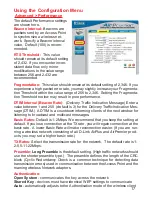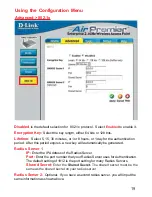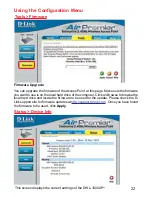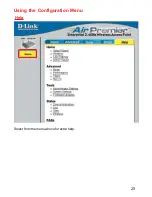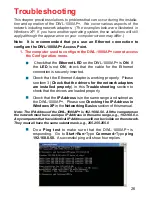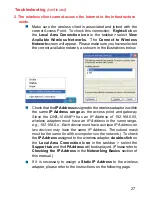
13
AP Name:
You may choose to rename your Access Point, especially if you have
more than one Access Point on your network.
SSID:
(
Service Set Identifier
)
default
is the default setting.
The SSID is a unique
name that identifies a network. All devices on a network must share the same SSID
name in order to communicate on the network.
If you choose to change the SSID from
the default setting, input your new SSID name in this field. The SSID can be up to 32
characters in length.
Channel:
Channel
6
is the default channel.
Input a new number if you want to change
the default setting. All devices on the network must be set to the same channel to
communicate on the network.
(However, if are employing the Load Balancing function of
the AP, you will need to set each AP to a different non-overlapping channel: 1, 6 or 11.
Clients in a “load balancing” network should set their channel to “auto.”)
WEP Encryption:
Select
Enable Encryption
to use
WEP
(
W
ired
E
quivalent
P
rivacy)
on the network. All devices on the network, and the Access Point, must share the same
WEP selection – either
Enable
or
Disable
, and they must share the same WEP key.
The WEP key is generated from
ASCII
or
Hexadecimal
entries that are either 64, 128,
or 256 bit in length. When enabling encryption, select the
Key Type
(ASCII or
Hexadecimal) and then input the appropriate digits or letters. You can create up to 4
keys. Select the key you wish to use.
Using the Configuration Menu
Home > Wireless
Hexadecimal
digits consist of the numbers 0-9 and the letters A-F
ASCII
(American Standard Code for Information Interchange) is a code for
representing English letters as numbers from 0-127
Dynamic Channel Selection Function:
automatically selects the fastest and
least populated channel available for the DWL- when it is a part of a Load
Balancing Group of 4 or more Access Points, when the 3 non-overlapping channels
have already been selected.

















